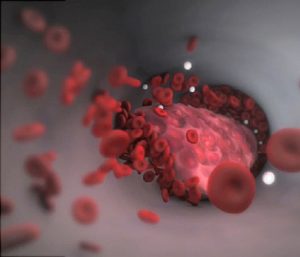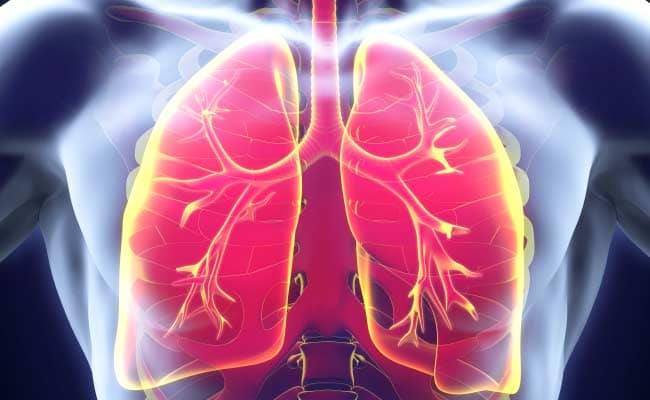This is a blockage in one of the pulmonary arteries in the lungs. In the most cases, this condition is caused by blood clots that travel to your lungs from the legs. In rare cases, this type of disease is caused by blood clots which travel to your lungs from other parts of the body, such as deep vein thrombosis. This condition can be life – threatening because the clots block the blood flow to the lungs. But the prompt treatment will reduce the risk of death. You should take measures to prevent blood clots in your legs because they can protect you against pulmonary embolism. [1,2]
Pulmonary embolism Symptoms
Symptoms: The symptoms of pulmonary embolism can vary greatly. This depends on how much of the lung is involved, whether you have heart disease or underlying lung condition and from the size of the clots. Here are the most common signs and symptoms of pulmonary embolism:
- Cough: When you have cough as symptom of pulmonary embolism, then it can produce bloody or blood – streaked sputum.
- Chest pain: You can some feeling like you have a heart attack. The pain can become worse when you bend, stoop, eat, cough or breathe deeply (pleurisy). This pain will get worse with exertion but it will not go away when you rest.
- Shortness of breath: This symptom is usually appearing suddenly and it always gets worse with exertion.
Also there are other signs and symptoms which can happen with pulmonary embolism, such as [1,2]
- Lightheadedness or dizziness
- Rapid or irregular heartbeat
- Excessive sweating
- Fever
- Clammy or discolored skin (cyanosis)
- Leg pain or swelling, or both, usually in the calf
Pulmonary embolism Symptoms and Causes
Causes: This condition is happening when a clump of material (which is most often a blood clot) gets wedged in an artery in the lungs. In the most cases, these blood clots are coming from deep veins of legs. DVT (deep vein thrombosis) is the name for this condition. In many cases, multiple clots are involved but this not means that all are at once. In the pulmonary infraction the portions of lung served by each blocked artery are robbed and they can die. This is making difficult for your lungs to provide oxygen to other parts of your body. There are rare cases when blockages in the blood vessels are caused by substances that are other than blood clots, such as
- Air bubbles
- Part of a tumor
- Collagen or other tissue
- Fat from the marrow of a broken long none
Risk factors: Every single person can develop blood clots and subsequent pulmonary embolism, but there are some factors which can increase your risk.
- Medical history: If you or some family member had pulmonary embolism or venous blood clots in the past, then you have higher risk of getting pulmonary embolism [3]. This can be caused by the inherited disorders which are affecting the blood and they are making it more prone to clot. Also there are some medical conditions and treatments which are increasing your risk of pulmonary embolism, such as
- Surgery: One of the leading causes for blood clots is the surgery. This is a reason why doctors are giving medications to prevent clots. These medicines can be given before and after major surgery, such as joint replacement. [4]
- Cancer: There are some types of cancers, such as lung, ovarian and pancreatic cancers and many cancers with metastasis, which can increase the levels of substances that help the blood to clot and the chemotherapy can increase the risk. Those women who have personal or family history of breast cancer of taking tamoxifen or ralosifene are having higher risk of blood clots. [5]
- Heart disease: It is known that cardiovascular diseases, especially heart failure, can lead to clot formation. [6]
- Prolonged immobility: Blood clots can happen during periods of inactivity, such as
- Long trips: When you are sitting in a cramped position during lengthy place or car trips, then it slows blood flow in your legs and this could lead to clots.
- Bed rest: When you are confined to bed for an extended period after trauma, leg fracture, heart attack, surgery or any serious illness, then this is increasing your chances of getting blood clots.
References:
[1] Tarbox AK, Swaroop M. Pulmonary embolism. International Journal of Critical Illness and Injury Science. 2013;3(1):69–72.
[2] Yamamoto T. Management of patients with high-risk pulmonary embolism: a narrative review. Journal of Intensive Care. 2018;6.
[3] JAMA and Archives Journals. Family history associated with increased risk of blood clots. Science Daily. 2009.
[4] Temgoua MN, Tochie JN, Noubiap JJ, et al. Global incidence and case fatality rate of pulmonary embolism following major surgery: a protocol for a systematic review and meta-analysis of cohort studies. Systematic Reviews. 2017;6:240.
[5] Li Y, Shang Y, Wang W, et al. Lung cancer and pulmonary embolism: What is the relationship? A review. Journal of Cancer. 2018;9(17):3046–57.
[6] Sorensen HT, Horvath-Puho E, Lash TL, et al. Heart disease may be a risk factor for pulmonary embolism without peripheral deep venous thrombosis. Circulation. 2011;124(13):1435-41.





